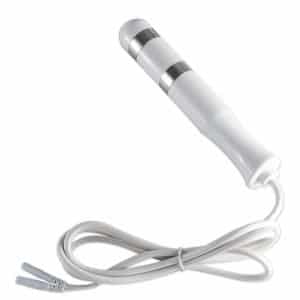
The number of Labiaplasty procedures, an operation to reduce the length of the inner folds of skin on either side of the vagina, are increasing dramatically. According to the International Society of Aesthetic Plastic Surgery (ISAPS), the number of procedures increased by 45% between 2015 and 2016- constituting the largest increase in the number of procedures1.
A study published in 2016 entitled “Motivations, Expectations, and Experiences of Labiaplasty: A Qualitative Study2“, found that online media representations of labial appearance, as well as negative past experiences, primarily sexual in nature, contributed to women’s concerns about their vaginal appearance.
Vaginal Relaxation Syndrome (VRS) is a common medical condition described as a loss of the optimal vaginal structure, and is usually associated with vaginal child delivery and natural aging.
Most women and their sexual partners refer to VSR as “loose vagina”, complaining of a loss of vaginal tightness, which is directly related to the reduction of friction during intercourse and thus to a decrease or loss of sexual gratification.
There is a large spectrum of various VRS treatment options on the market, ranging from behavioral (Kegel exercises) through pharmacological therapies (hormonal, tightening creams and sprays) to various invasive surgical procedures. While behavioral and pharmacological therapies are non-invasive and safe, they have limited efficacy. On the other hand, various surgical procedures promise a much better final result at the price of higher associated risks and an extended recovery period.
In recent years, several novel therapies emerged on the market using Lasers or Radio-frequency energy sources for non-invasive vaginal rejuvenation. A few such products are:

FemiLift for LVT – non-invasive Laser Vaginal Tightening using CO2 laser that thermally heats the inner layers of the vaginal tissue inducing collagen and elastin contraction and regeneration of these proteins in the long run.
ThermiVa® – a non-invasive, non-hormonal treatment that uses controlled radiofrequency energy to gently heat tissue to rejuvenate collagen, without discomfort or downtime.
With celebrities like Farrah Abraham,the 26-year-old Teen Mom sharing photos on Instagram3 and chatting about her procedure of vaginal rejuvenation4 , the procedure is constantly gaining popularity among women of all ages and ethnicities.
The next natural step is the development of a home-use device for vaginal rejuvenation. Not an easy task!
The two competing technologies in the vaginal rejuvenation professional market are Fractional lasers and Radio-frequency. Past experience of implementing these technologies in home-use devices shows a clear advantage in favor of Radio-frequency technology in terms of size, energy source and ease of implementation. Vaginal electrodes for Emergency Medical Services (EMS) already exist in the market and adding Radio-frequency energy to those electrodes, or to similar ones, is quite easy. This makes the path to home use vaginal rejuvenation devices much simpler. The challenge lies in proving the safety and efficacy of the device and gaining regulatory approval. It seems that the regulatory path will first require PDU (Physician Directed Use) and later over-the-counter approval1.
Recommended reading NowMi vitamin C oxygen facial
https://www.isaps.org/wp-content/uploads/2017/10/GlobalStatistics.PressRelease2016-1.pdf
2. https://academic.oup.com/asj/article/36/8/920/2613944
3. https://www.instagram.com/p/BYRcLvlH64v/?hl=en&taken-by=farrah__abraham
4. http://www.dailymail.co.uk/health/article-4834938/What-vaginal-rejuvenation.html